Abstract
A controlled, longitudinal study was performed to investigate the consequences of unemployment on health. A significant increase in morbidity was demonstrated in the families of 129 workers (80 men and 49 women) made redundant when a factory manufacturing meat products closed. A significant increase was also found when the employees themselves were studied as a separate group. The decline in health began when, two years prior to job-loss, the management intimated that production might have to cease. In the four years after this news, consultation rates in the study group showed a highly significant increase. Both referrals to and attendances at hospital outpatient departments also increased significantly. The results suggest that the threat of redundancy is a stress which is equal to, if not greater than, the actual event. Extrapolation from these findings implies an increase in work-load and cost for the National Health Service directly attributable to a rising unemployment rate.
Full text
PDF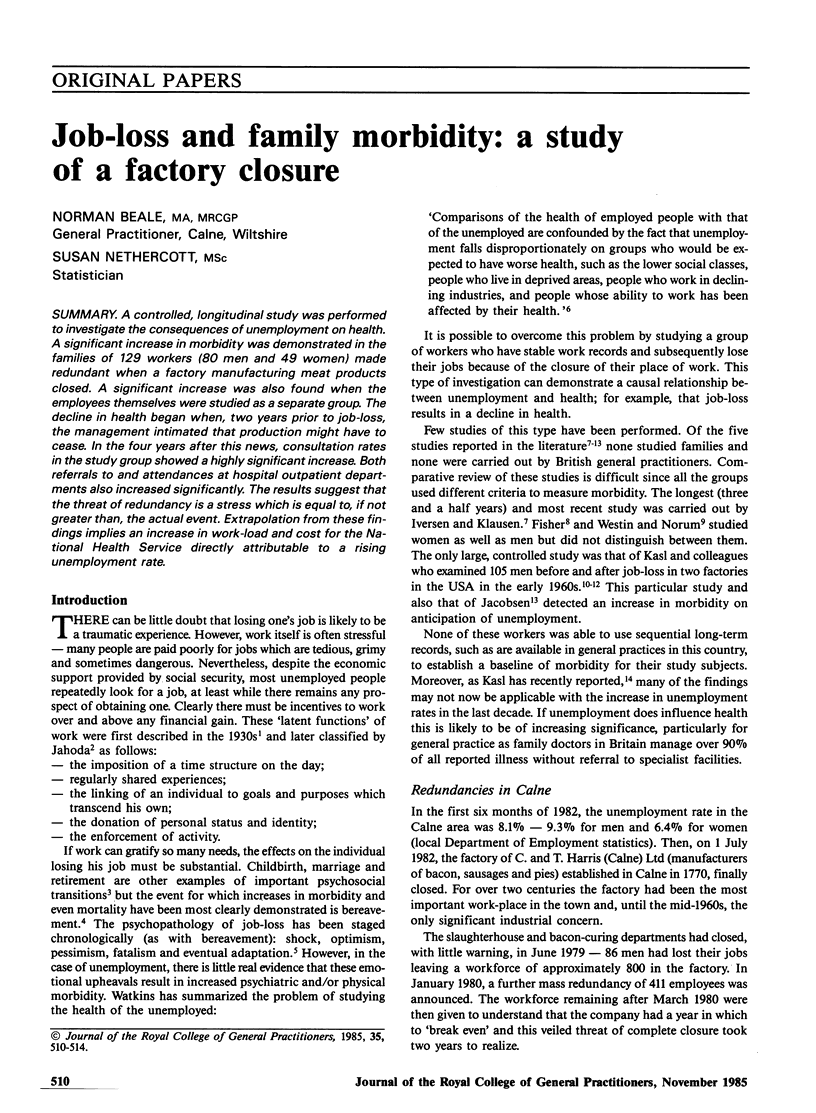
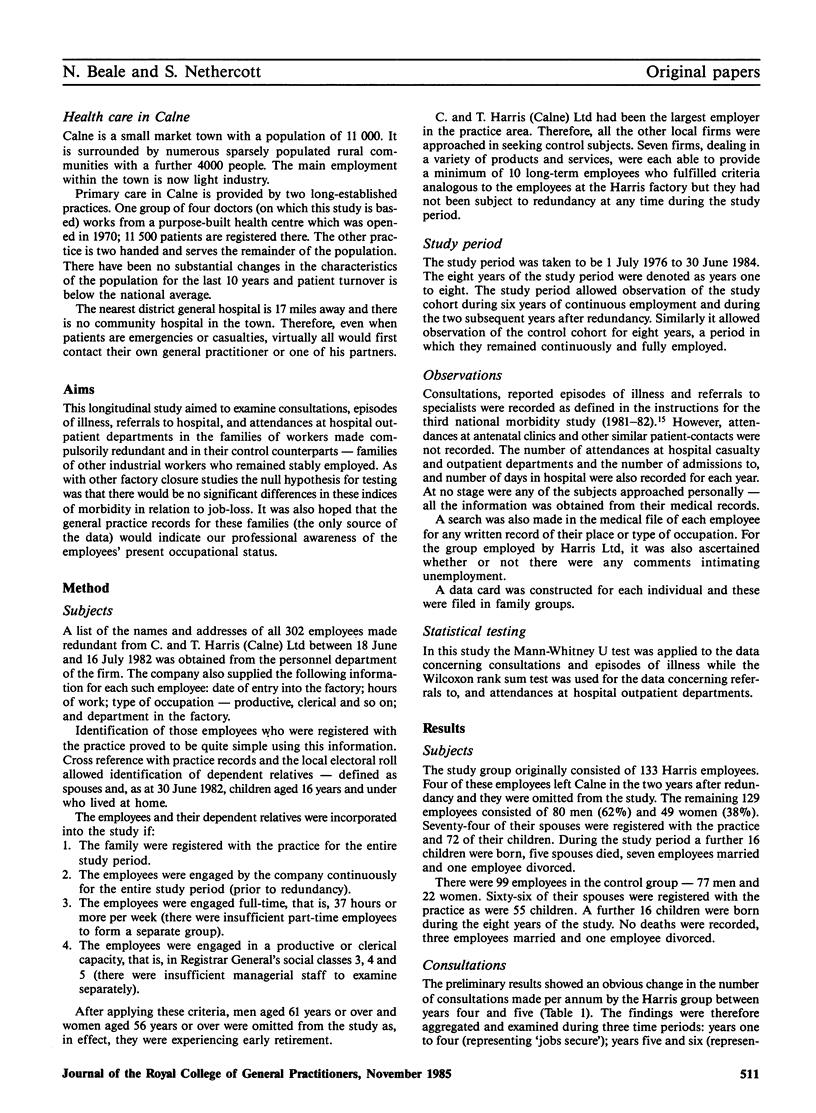
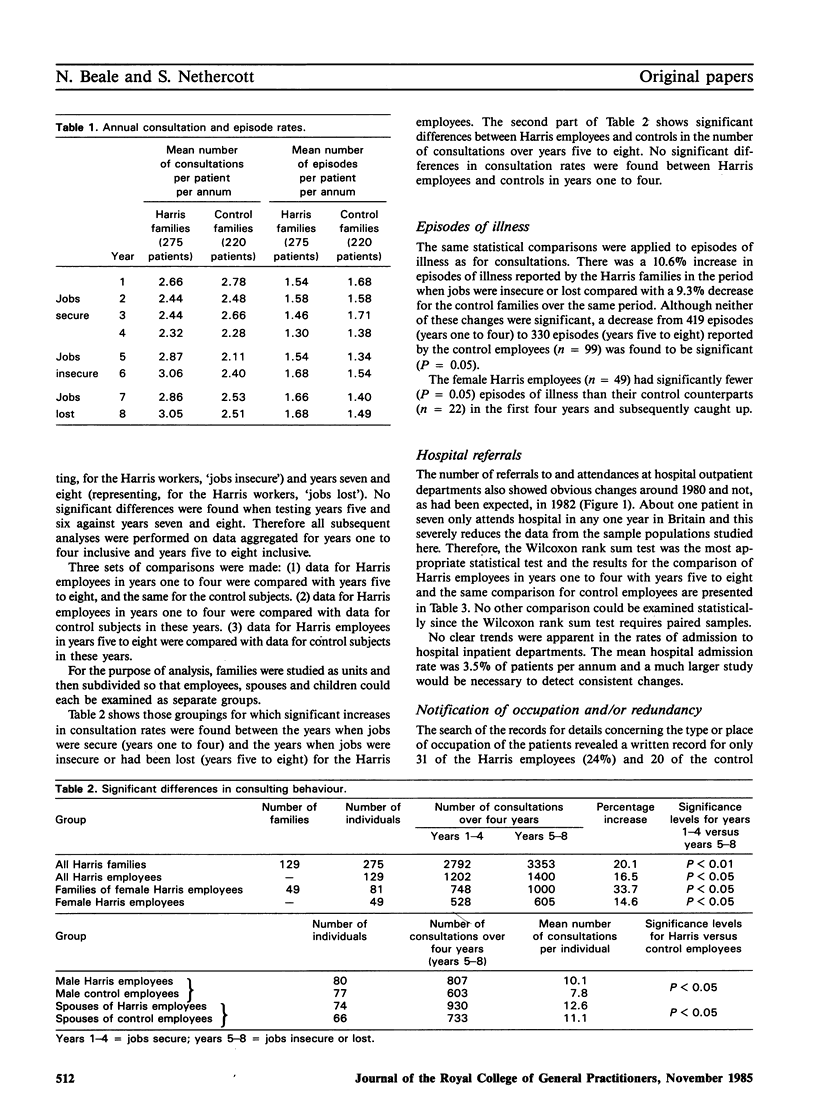
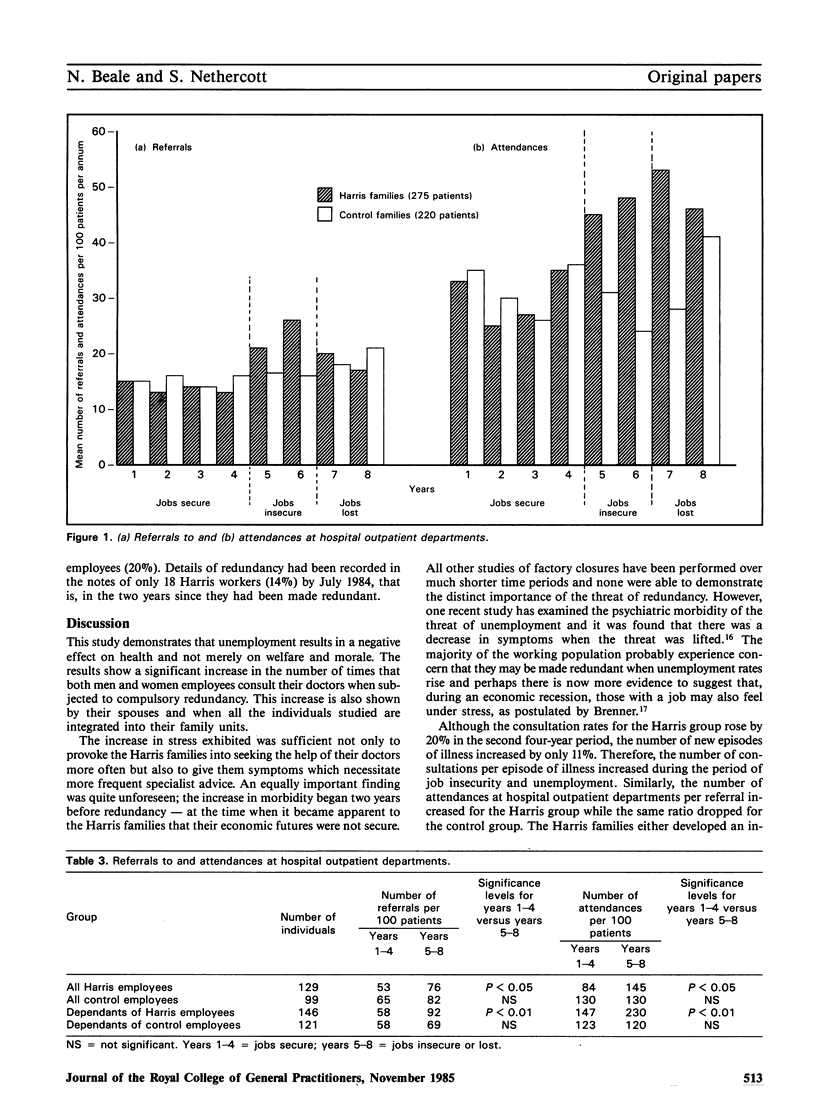
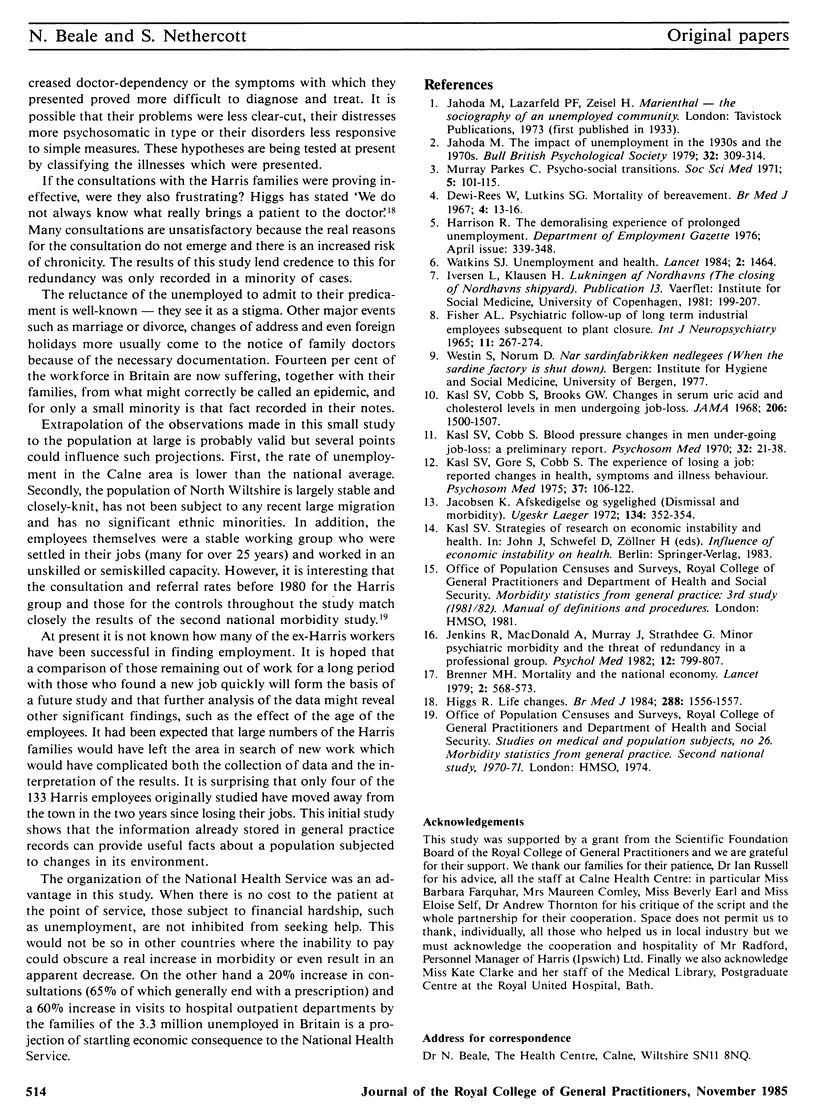
Selected References
These references are in PubMed. This may not be the complete list of references from this article.
- Brenner M. H. Mortality and the national economy. A review, and the experience of England and Wales, 1936--76. Lancet. 1979 Sep 15;2(8142):568–573. [PubMed] [Google Scholar]
- FISHER A. L. PSYCHIATRIC FOLLOW-UP OF LONG-TERM INDUSTRIAL EMPLOYEES SUBSEQUENT TO PLANT CLOSURE. Int J Neuropsychiatry. 1965 May-Jun;1:267–274. [PubMed] [Google Scholar]
- Higgs R. Life changes. Br Med J (Clin Res Ed) 1984 May 26;288(6430):1556–1557. doi: 10.1136/bmj.288.6430.1556. [DOI] [PMC free article] [PubMed] [Google Scholar]
- Jacobsen K. Afskedigelse og sygelighed. Ugeskr Laeger. 1972 Feb 14;134(7):352–354. [PubMed] [Google Scholar]
- Jenkins R., Macdonald A., Murray J., Strathdee G. Minor psychiatric morbidity and the threat of redundancy in a professional group. Psychol Med. 1982 Nov;12(4):799–807. doi: 10.1017/s0033291700049102. [DOI] [PubMed] [Google Scholar]
- Kasl S. V., Cobb S. Blood pressure changes in men undergoing job loss: a preliminary report. Psychosom Med. 1970 Jan-Feb;32(1):19–38. doi: 10.1097/00006842-197001000-00002. [DOI] [PubMed] [Google Scholar]
- Kasl S. V., Cobb S., Brooks G. W. Changes in serum uric acid and cholesterol levels in men undergoing job loss. JAMA. 1968 Nov 11;206(7):1500–1507. [PubMed] [Google Scholar]
- Kasl S. V., Gore S., Cobb S. The experience of losing a job: reported changes in health, symptoms and illness behavior. Psychosom Med. 1975 Mar-Apr;37(2):106–122. doi: 10.1097/00006842-197503000-00002. [DOI] [PubMed] [Google Scholar]
- Parkes C. M. Psycho-social transitions: a field for study. Soc Sci Med. 1971 Apr;5(2):101–115. doi: 10.1016/0037-7856(71)90091-6. [DOI] [PubMed] [Google Scholar]
- Rees W. D., Lutkins S. G. Mortality of bereavement. Br Med J. 1967 Oct 7;4(5570):13–16. doi: 10.1136/bmj.4.5570.13. [DOI] [PMC free article] [PubMed] [Google Scholar]
- Unemployment and health. Lancet. 1984 Dec 22;2(8417-8418):1464–1465. [PubMed] [Google Scholar]


